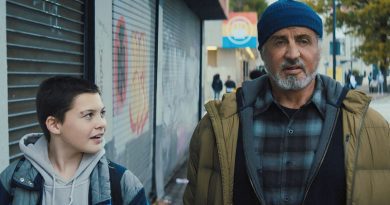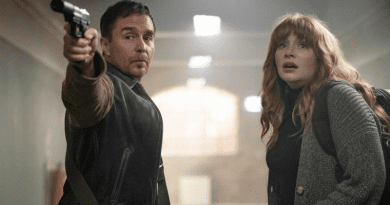The Alto Knights Review: Barry Levinson’s Supposedly Ambitious Mob Drama Misses the Mark
Is The Alto Knights really that bad? That’s the question I’ve been wondering ever since the mob drama debuted in cinemas last month to lukewarm responses, bringing in less than US$10 million against its reported US$45 million budget. The movie has since died a quick death before finally landing on digital platforms. I mean, how could this be? On paper, The Alto Knights has a lot going for it, including veteran director Barry Levinson calling the shots, who is no stranger to the mob genre, seen in Warren Beatty-starred Bugsy back in 1991.
His directorial inputs may have been less prolific when compared to his 80s and 90s heyday from the time he broke out in 1982’s Diner before giving us notable movies like Good Morning, Vietnam, Rain Man and Disclosure. But it’s nice seeing his name again in a theatrical feature, his first in a decade — not counting his straight-to-streaming HBO Films’ The Survivor — since Rock the Kasbah before he dedicated his career to television in recent years.
He teams up with Nicholas Pileggi, best known for writing two of the best mob movies in the 90s, including Goodfellas and Casino. Then, there’s Robert De Niro, playing a familiar role synonymous with his acting career: a mob boss. And interestingly, but also weirdly, not one but two characters, as Frank Costello and Vito Genovese. You read it right: it’s Robert De Niro vs Robert De Niro, complete with different personalities, prosthetics and makeup so the viewers can distinguish between the two of them. But why? Why enlist De Niro to play dual roles since the characters aren’t even identical twins but rather childhood friends-turned-enemies?
While this allows De Niro to flex his acting muscles, and I admit he made quite an impression alternating between the level-headed Frank Costello and the volatile Vito Genovese, where the latter instantly reminds me of Joe Pesci-like showy mannerism, his dual roles come across as a gimmick that is more distracting than rewarding. Frankly, it would have been better if Levinson had cast another actor to play either Frank Costello or Vito Genovese.
The Alto Knights run at two hours, but it sure feels like an eternity. Given the storytelling potential surrounding these real-life mob bosses, I can’t believe the subject bores me with Levinson’s clunky direction and Pileggi’s surprisingly monotonous screenplay. It’s not like Levinson here lacks trying since he incorporates his mob drama by jazzing it up with a semi-documentary style, black-and-white footage, and even De Niro’s Frank breaking the fourth wall, narrating his story. He doesn’t shy away from the matter-of-fact violence commonly associated with mob movies, such as the scene which takes place in a barbershop. He still knows how to stage a suspenseful scene, notably the one revolving around the state police.
The movie captures the old-school feel and look of the late 1950s-set mob drama, thanks to Dante Spinotti’s cinematography, along with Neil Spisak’s production design and Jeffrey Kurland’s costume design. And yet, going back to the story, this is where The Alto Knights falters the most. It was plain uninteresting to begin with, despite the movie opening with a failed assassination attempt on Frank Costello, which is meant to draw one’s attention. How I wish this would be the case, but the rest of the movie just trudges through the laborious pace with a low-energy storytelling.
The whole thing is as tedious as it goes, and if that’s not enough, the movie meanders around with subplots revolving around Frank’s wife, Bobbie (Debra Messing) and Vito’s club-owner wife, Anna (Kathrine Narducci). By the time The Alto Knights concludes with an underwhelming finale, it’s a pity how the potentially great mob movie is pretty much a missed opportunity.





